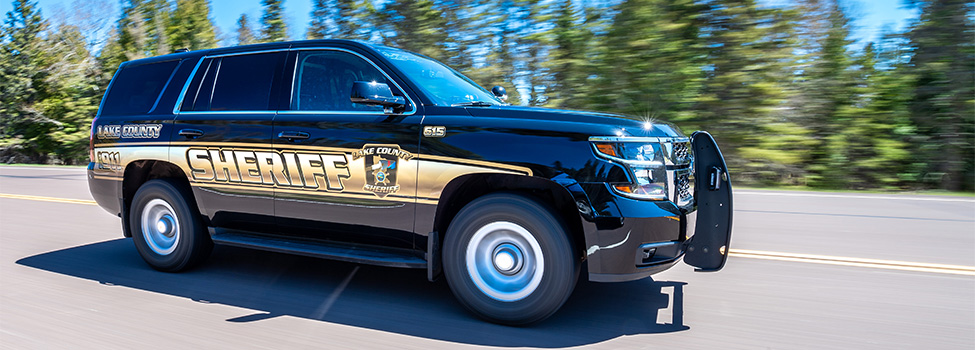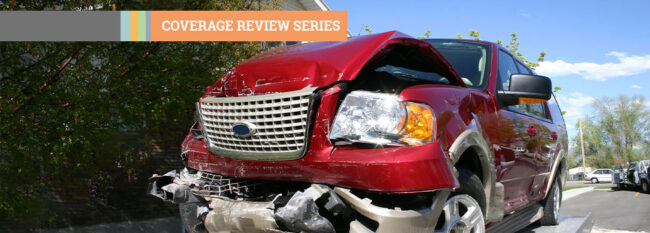Article
Law Enforcement Ride-alongs

Permitting the public to ride along with law enforcement (a.k.a. law enforcement ride-alongs) comes with some risks. Members should understand those risks and take action to manage them.
Ride-long Benefits
Many Minnesota agencies permit law enforcement personnel to have ride-alongs. For purposes of this article, ride-alongs do not involve employees, other law enforcement personnel, law enforcement volunteers or prisoners.
Ride-alongs are generally persons interested in law enforcement as a career, someone curious about how local government operates or family members of law enforcement personnel. Members cite the following as reasons to permit law enforcement ride-alongs:
- Provides a citizen an opportunity to understand better what is involved in law enforcement/patrol work
- Provides family members first-hand experience regarding the work performed by the law enforcement officer
- Provides individuals with an interest in pursuing a law enforcement career a clearer understanding of what a law enforcement position entails
Ride-along Risks
Due to the inherently dangerous nature of law enforcement, permitting ride-alongs comes with risk. Some of the obvious risks include:
- Injury from an automobile accident
- Injury arising from the execution of law enforcement duties
For example, having a ride-along involved in a high-speed pursuit, responding to a burglary or shooting, or having contact with an individual during apprehension exposes the ride-along to a great deal of risk.
Further, when an officer is obligated to consider the ride-along when making split-second decisions, critical reaction time may be taken away from dealing with the situation. This may increase the risk to both individuals.
Even with the greatest control, the ride-along may be exposed to graphic and frightening situations that may lead to personal trauma.
Allowing a ride-along may give rise to questions concerning members’ and their law enforcement agencies’ ability to comply with the Fourth Amendment, Minnesota Government Data Practices Act and chain of custody/scene containment.
For example, in 1999, the United States Court in Wilson v. Layne said the presence of news reporters participating in a ride-along with police officers who were executing a search warrant could constitute a violation of the Fourth Amendment. Accordingly, the presence of any private person may constitute a violation of the Fourth Amendment, resulting in the possible suppression of information.
When ride-alongs are permitted to perform activities for which they are not certified (such as pressing start on the breath alcohol test machine), suppression may result.
As a normal part of their duties, law enforcement officers often receive and communicate sensitive information. The Minnesota Government Data Practices Act classifies some of this information as nonpublic and restricts to whom the data may be disseminated. The presence of a private citizen during the collection and/or dissemination of nonpublic data may give rise to a complaint being filed by the subject of the data, thereby increasing the risk of liability for the member.
Issues may also arise from law enforcement malfeasance, such as sexual misconduct. Consider the case of Reinhardt v. Dennis out of Michigan where a ride-along claimed that the law enforcement officer had sexually abused her. This allegation resulted in a criminal and civil claim.
MCIT Coverage
The MCIT Coverage Document does not specifically address liability resulting from law enforcement ride-alongs. MCIT coverage typically extends to liability claims, subject to the usual terms, conditions, limitations and exclusions within the coverage document. Below is a general discussion of how MCIT coverage would respond. Whether a specific claim is covered is reviewed by MCIT on a case-by-case basis upon a request for coverage.
General Liability and Public Employees Coverage
A general liability claim from a third party is subject to a deductible. Damages from a noncovered claim are the responsibility of the member. Depending on the performance of the member and MCIT as a whole, general liability and public employees liability losses may affect the potential for future dividends.
Workers’ Compensation
It is MCIT’s position that injuries and illnesses sustained by an individual during a ride-along are not compensable under Minnesota Statutes Chapter 176 – Workers’ Compensation because:
- No employer-employee relationship exists
- The ride-along is not a law enforcement volunteer
Even though a claim may be denied by MCIT, the ride-along still has the ability to contest the denial. In the end, the decision regarding compensability is made by a workers’ compensation judge.
Workers’ compensation losses affect a member’s workers’ compensation experience modification factor, which influences contribution and may even affect future dividends.
Automobile Coverage
The majority of marked squad cars and emergency response vehicles are not required to be registered. According to the MCIT Coverage Document, personal injury protection (also called no-fault protection) coverage does not extend to an injured nonemployee passenger in a nonregistered vehicle. Therefore, a ride-along injured in a nonregistered, marked squad car would have to rely on his or her personal auto insurance policy or any other policy that covers the individual for compensation. This policy could be the ride-along’s own or the policy of any vehicle owned by a member of his or her household.
Law enforcement ride-alongs need to be advised that they may be responsible for costs associated with their being injured in a nonregistered, marked squad car.
When the vehicle is required to be registered, the injured nonemployee’s personal insurance policy or any policy that covers him or her would still be primary. However, unlike cases involving nonregistered vehicles, a member’s MCIT personal injury protection coverage would be available in instances where the nonemployee had no other available coverage.
The exception to this rule is that if the nonemployee is a spouse or resident family member of the employee riding in the employee’s employer-furnished, registered and scheduled vehicle. In this case, MCIT’s personal injury protection coverage would be primary.
For uninsured motorist and underinsured motorist coverage, MCIT’s coverage would be primary on all member-owned, registered and scheduled vehicles.
Members need to consider how to respond to a ride-along request for compensation if the ride-along’s injury results in increased cost to his or her automobile coverage.
Whether a vehicle is registered or not, members should also be aware that they retain the liability that may arise in the form of a claim alleging negligent operation of a vehicle or some other similar claim. Tort caps would apply to this type of loss. MCIT would generally defend the claim, subject to the usual terms, conditions, limitations and exclusions within the MCIT Coverage Document.
Personal Property
If a ride along brings personal items with him or her to the ride along and the items are lost or damaged, MCIT coverage does not apply. The member has the option to reimburse the individual for items at its own expense.
Risk Management Suggestions
After balancing a desire to offer a ride-along program and the risks of the program, the most prudent course of action may be to limit the activities of the officer, thereby reducing risks associated with having a passenger. Limiting the work that an officer can perform during a shift with a ride-along may have an effect on the member’s budget; however, the hard and soft costs to defend a claim also affect the member’s budget and must be considered.
Members and law enforcement agencies that continue to offer a ride-along program should consider implementing strategies to mitigate exposures.
Develop written policies and procedures for ride-alongs. To protect the member best, policies and procedures should clearly state that ride alongs are not employees or law enforcement volunteers. They should also address:
- Who may be guests, including setting a minimum allowed age
- How guests will apply to participate
- What the selection criteria are (selection should be based on articulable objective factors)
- What medical or emergency information will be needed
- What the order of priorities is for individuals seeking ride-alongs
- What dress and equipment prohibitions or requirements are necessary
- Whether ride-alongs may carry weapons of any kind
- What limitations there will be for officers hosting a ride-along, such as restrictions based on time of day and supervisory approval requirements
- How much risk, if any, the member will assume for ride-alongs
- What procedures will be in place for dealing with adult/student same sex supervision
Further risk management best practices include:
- Perform criminal background checks on applicants.
- Limit the number of times a person can participate in a ride-along.
- Consider only allowing nonrelatives to ride with law enforcement officials.
- Require waivers.
- Require ride-alongs to sign confidentiality agreements.
- Limit a ride-along’s exposure to dangerous situations:
-
- Make the individual aware of the law enforcement officer’s expectations.
-
- Discuss with the ride-along the hazards that may be encountered and the individual’s appropriate response/role in each situation.
- Permit only experienced officers to host ride-alongs. The officer should be able to do the job and keep reasonable supervision of the ride-along.
- Do nothing that might imply a ride-along is a law enforcement volunteer or employee.
- Do not permit or direct a ride-along to perform work.
- Inspect and educate officers on vehicle safety mechanisms (e.g., air bags and how to apply their use (or disengage) after considering the physical attributes of the ride-along).
- Require ride-alongs to be accompanied by an officer at all times.
The decision to offer a ride along program is one each member and law enforcement agency needs to make after balancing the merits of offering the program and the risk associated with the program. Staffing and budget considerations remain a priority, but so should the agency’s ability adequately and safely to perform law enforcement duties when a ride-along accompanies an officer.
When the decision to offer a ride-along program is made, it is critical that the member consider ways to provide the program and manage the associated risks. As always, it is prudent to discuss issues related to offering a ride-along program with the county attorney or legal counsel regarding any legal consequences of sponsoring such a program.
MCIT provides the following model to its members as a recommended waiver. This is only a recommendation and does not constitute legal advice. MCIT recommends that members consult legal counsel prior to taking any action.
SAMPLE WAIVER AND HOLD HARMLESS AGREEMENT
| _________________________________________________ Full Name of Requestor (“Undersigned”) |
________________________ Birth Date |
| _________________________________________________ Full Name of Parent or Legal Guardian (if Requestor is under 18 years of age) |
________________________ Birth Date |
| _________________________________________________ Address (Street and Mailing) |
_________________________ Telephone |
THE AFOREMENTIONED AND UNDERSIGNED “Requestor”, in consideration of the opportunity to participate as a “ride along” with ________________________ hereby expressly waives any claim that he/she may have against the ________________________ , its agents and employees, arising from the undersigned’s participation as a ” ride along”. This waiver is made freely with the knowledge and understanding that by the nature of the work conducted in law enforcement, a certain danger does exist to those participating in a ride along”. These risks include, but are not limited to risk of death, personal injury or property damage arising from or in any way connected with the use of weapons, unlawful acts, forcible resistance by law violators or suspected law violators, assault, riot, breach of peace, fire and any other police-connected risk. In addition to the physical and emotional dangers, there exists the possibility of exposure to illnesses, including but not limited to potentially fatal blood borne pathogens such as HBV or HIV. This waiver is complete and absolute and shall include but is not limited to, injury to the person or property of the requestor, whether occasioned by the acts of any employee or agent of ________________________ , or any third party.
It is further understood that the undersigned requestor agrees to hold harmless the ______________________ , its employees and agents, from any claims or damages arising from or associated with the undersigned’s participation as a ” ride along”. My rights, if any, for civil damages against the driver of the vehicle or any person liable for the conduct of the driver for death, personal injury, or property damage are limited to those rights enjoyed by a guest.
| _________________________________________________ Full Name of Parent or Legal Guardian (Both the parent/guardian and the requestor must sign if requestor is under 18 years of age) |
________________________ Birth Date ) |
| ____________________________________ Witness |
____________________________________ Witness |
MCIT is available to provide additional information regarding coverage and risk management advice. Members can contact MCIT toll-free at 1.866.547.6516.
Topics



